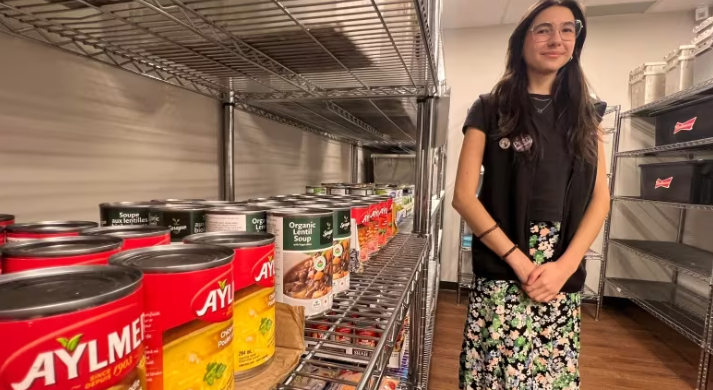Misunderstanding from social media spurs rise in international student food bank visits

YouTube video suggested food banks could provide a regular supply of free food instead of for emergencies
A misconception about how Canadian food banks operate — combined with some misleading information on social media — has led to a sudden increase in usage among international students at London, Ont.’s food bank along with others in Canada.
London Food Bank co-executive director Glen Pearson said his staff were already dealing with a 43 per cent increase in visits at the start of this school year when they began to notice a spike in food requests from post-secondary students.
The London Food Bank requires users to show ID, and staff noticed many were international students from London’s Fanshawe College.
“The numbers just began to mushroom,” said Pearson. “Our staff said they’re coming in such huge numbers and that we’re going to have to do something about it. It caused some concern as to whether or not we would have enough supply.”
Students have always made up a legitimate portion of their visits, he said. Like many Canadians, more students are struggling with higher costs for basics like housing and food.

Not unique to London
However staff soon learned the spike in visits was caused in part by social media posts, Pearson said.
One YouTube post in Malayalam, a language spoken in southern India, suggested food banks in Canada could provide visitors with a regular supply of free food — instead of a resource used in emergencies.
“We were all feeling [demand] continue to grow. It wasn’t something that was unique to London,” said Pearson.
A food bank in Brampton had to shut its doors to international students this week, saying the students were creating a demand the food bank couldn’t meet.
The situation in London prompted a call to Fanshawe College administration and soon an email was sent out to all students, clarifying the role of food banks. Pearson said once students were informed about how food banks work, they were apologetic.
John Riddell of the Fanshawe Student Union said they’ve worked to “counter” misinformation students were seeing about food banks, which he said wasn’t coming from FSU or the college.
Legitimate need among students remains high
“While there may be a misunderstanding from students about what the food bank resources are, we certainly know there is a good number of students who are in legitimate need of support,” he said.
Fanshawe runs a food bank for students called The Sharing Shop. It allows students in need to get a grocery gift card a few times a year. Students can get a referral from a campus learning adviser.
Western’s University Students’ Council (USC) also runs a food bank. It provides food hampers for students who demonstrate a need through an online request form.
The USC used to allow students to show up in person for food, but vice-president of student services Bianca Gouveia said those in-person visits were stopped in September. They’ve now shifted to an online request form to better manage the requests.
And while Gouveia hasn’t heard about Western students showing up in droves at London’s food bank, she said the need at the campus food bank remains high.
“We’re close to 600 hamper requests [so far this year],” she said. “We’ve definitely continued to see an increase. Students are feeling pressure on all fronts for cost of living.”
Related News
Trade war, slumping border traffic: What does that mean for the Gordie Howe bridge?
Amid U.S. President Donald Trump’s tariffs which have triggered a trade war with Canada, cross-border trips haveRead more
Trump administration threatens Harvard’s foreign enrolment, tax-exempt status
U.S. Homeland Security Secretary Kristi Noem speaks during an event on April 9, in Washington,Read more
